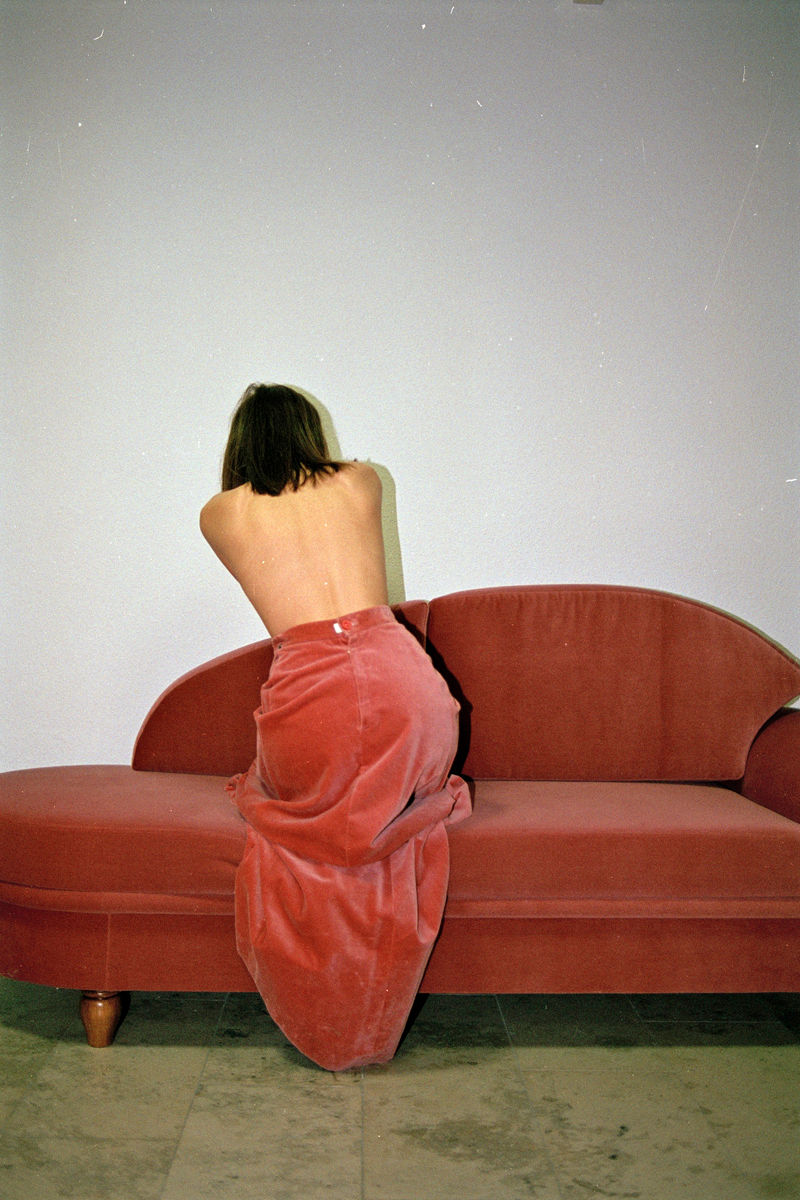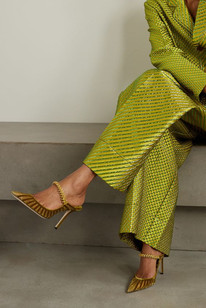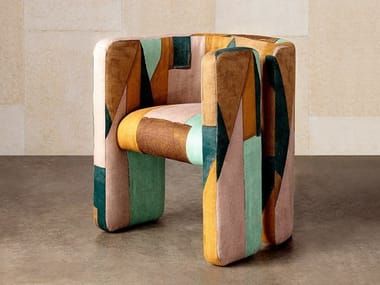From Closet to Interiors: Translating your Personal Fashion Style into Interior Design with Confidence
- Adriana Pietropaolo

- May 2, 2024
- 7 min read

A common pain point I hear from clients is the uncertainty around finding their interior aesthetic, AND feeling confident about it. Social media can make it so overwhelming to really hone in and understand what you love – we’ve talked about the importance of creating your own Vision Session for your renovation, but I wanted to dig a little deeper into one of the first places I recommend to look: your closet.
That’s right, your very own closet.
Fashion and Interior Design are two inseparable identities. Over the course of history you can see how they constantly informed each other, in fabrics, colours and textures for clothing and interior furnishings. They share many common elements when you really think about it: structure, shape, form, movement, colour, texture, style, etc.
Whenever I’m creating a design-narrative for a client, I often reference high-fashion imagery as it often is the perfect visual representation of colour palette, detail, mood and cultural elements intended for an interior space.
Both fashion and interior design are deeply personal expressions of oneself. Just as you feel empowered when wearing an outfit that reflects your personality, surrounding yourself with a living environment that resonates with your aesthetic preferences can boost your mental wellness, make you feel more connected with your space and have it tell a story about who you are.
Because chances are if you can wear it, you can live in it too.
We recently finished our primary bedroom, and the palette inspiration from this space came unexpectedly from colours I am constantly drawn to in my own wardrobe.
I’m going to walk you through how to translate your closet into an interior design aesthetic, by highlighting four parallels between your fashion details and interior design elements, and using our primary bedroom as visual example.
1. Overall Fashion Palette
2. Capsule + Special Pieces
3. Accessory Accents
4. Styling Finesse
Quick disclaimer to say that some of these examples are exactly that - purely examples. Fashion is so personal, as is interior design, so none of these parallels are definite! That's the beautiful thing about it all.
1. Overall Fashion Palette
A quick first step is identifying your typical go-to fashion palette.
By just opening your closet doors, take note of an overall palette theme. There might be a lot of neutrals, or a lot of bold colours, patterns perhaps, or a complete mix. This will look different for everyone, but take note of what that overall theme is.
In my own closet, there are a lot of blues, blacks, cognac/tans, camels, ivories and then spontaneous pops of colour, pattern and unique texture.
How the closet palette can manifest into an interior space
My overall closet palette translated into the foundational colours I used on the bedroom walls, ceiling and millwork. I honed in on the warmer camels and taupes because they always make me feel comfortable, and in the room itself it makes me feel like I am living in a warm hug. I opted for blue on our closet millwork, because I love offsetting warmer tones with cooler colours like blue, or vice versa, and this felt like a well-balanced fit. Finally, I went dark with the floor - reminiscent of my many black clothing pieces - as the neutral foundation to the whole space grounding it completely and letting the other colours be more prominent in the room.
2. Capsule + Special Pieces Analysis
Next I would hone in on your go-to capsure items that you wear over and over.
Starting with your classic staples, what do they have in common? Perhaps it’s colour, or texture. Take a look at the structure of the piece: is it baggy or is it more refined, boxy or tight-fitting? Would you say they are more modern cuts or more classic and timeless pieces?
Next move on to your special pieces, the one-of-a-kind gems you like to throw into an outfit every once and a while. What makes them special? Is it a bold colour? Is it the stitching or a beading detail? Is it the special cut and structure, or unique fabric?
In my own closet, my capsule wardrobe includes lots of jean texture in different colours, with worn-style washes. I also have a lot of formal and funky dress shirts with structured collars, stripes or special stitching details. Then I have lots of black leathers, and warmer knit camels and blazers.
For my special pieces: I tend to be drawn towards metallics, sequins, studded details and the occasional bold colour (hello chartreuse) or print.
How the capsule/accent clothing pieces manifest into an interior space
My pieces helped inform the rest of the design palette as well as specific design details that I balanced in the space. For example, my love of knitted ivories and camels, informed our neutral headboard and light linens as well as our tone-on-tone drapery. The classic go-to structure of my dress shirts informed the architectural detailing in the room from the crown moulding to the traditional shaker closet door. My love of fun metallics and sparkle found its way in the iridescent oil-like table lamps that add this special moment but does not overpower the room. My love of one-off patterns is represented in the burl-wood dresser that brings warmth to the room but offers such a unique wood grain that can’t be replicated. And finally - I introduced a touch of green in my storage ottoman from my love of olive and chartreuse.
3. Accessories
Accessories are the finishing touches to any outfit, and of course the same can be said for an interior space. They are the hardware-jewelry, the seasonal-coat-throw-pillow, the one-of-a-kind-clutch or light fixture, etc. These are the details that put the outfit, or the room, together.
You are probably drawn to certain types of metal finishes in your jewelry – and this can be seen in the metal accent and finishes you use in your door hardware, or light fixtures for example.
Looking at handbags, perhaps there is something unique about the stitching that could be translated into the stitching of your headboard, or using its bold colour as the piping of a throw pillow.
The shoes might have a unique pattern, shape or form that informs your grounding area rug or your shape of your mirror.
Like in fashion, accessories are the easiest way to change the look of the space. For your own interior space, experiment with throw pillows, bedding, hardware, and even your wall paint to see what resonates with you in the room.
How the accessories can manifest into an interior space
I love mixing golds, silvers and coppers and so we have a mix of metals in our bedroom with patina brass and black hardware throughout. I have aways loved traditional and bold patterns for scarves and purses, and this came through in a contemporary take on a traditional area rug whose palette I was drawn to and immediately saw the parallel in the similarity of my closet. I also decided to use personal heirlooms like this milk glass and brass container that are not necessary my initial go-to accessory style, but hold personal meaning and help balance with other important life artefacts in the space.
4. Styling
They say an outfit can wear you, or you wear the outfit. This is no different than an interior space, and it all comes down to styling. You can a beautifully renovated home, but when it’s not styled it can feel sterile and boring, as if its not lived in. This is very personal and looks different for everyone.
For example, someone who has a more traditional and crisp clothing style – this might translate into a space that carries more traditional details like moulding, rich wood tones, and mid-contrast elements.
Or someone who has a more neutral and conservative clothing style – this could translate into a space that has a lot of transitional details, softer textures and neutral palettes.
Or someone who has a very bold and colourful wardrobe, may have a more layered and eclectic space with mixed colours, textures and materials.
How styling can manifest into an interior space
I don’t like to put any style – be it fashion or interior – into any box. I think style is something ever evolving, and deeply personal. But as I relate my fashion style to that of my bedroom, I think it is a true mix of traditional, modern and eclectic. Quiet edgy details against a neutral yet colourful space. I also love that there are unexpected style elements like our vintage mirror – that reminds me of cowboy boots – and our MCM globe light that belonged to my grandparents, and oversized comforter that offsets the refined lines in the space.
All in all – the room feels like me – and literally looks like the clothing in my closet.
Our advice at the end of the day? Embrace what you love without hesitation.
Whether it's a bold floral print, a vintage-inspired furniture piece, or a minimalist color scheme, trust your instincts and embrace the elements that make you feel most at home.
One of the most exciting aspects of exploring the connection between fashion and interior design is the opportunity to break free from traditional constraints and embrace creativity without limits. Just as fashion designers push boundaries with innovative designs and unexpected pairings, interior design can experiment with unconventional colour combinations, eclectic decor styles, and unique furnishings to create spaces that spark inspiration.
Don't be afraid to mix and match elements from different eras, cultures, and artistic movements. Blend vintage treasures with contemporary pieces or incorporate global influences into your space. By embracing yourself and what you love and what makes you light up, you can create a living space that tells your story and celebrates the rich tapestry of styles that define you.
Fashion and interior design are not just superficial pursuits; they are powerful forms of self-expression that shape the way we experience the world around us. By looking into your own closet for palette inspiration and embracing confidence in what you love, you can create a living space that reflects your personality with confidence.
Why not try this yourself? Take a peek in your wardrobe, pick out your beloved pieces and start to piece together what you love about them and how that can translate into a physical space.
And as always, if you’re ready to create a space that tells your story from top to bottom, make sure to reach out for us and set up a complimentary Phone Date to get the process started!
-AP











































Comments